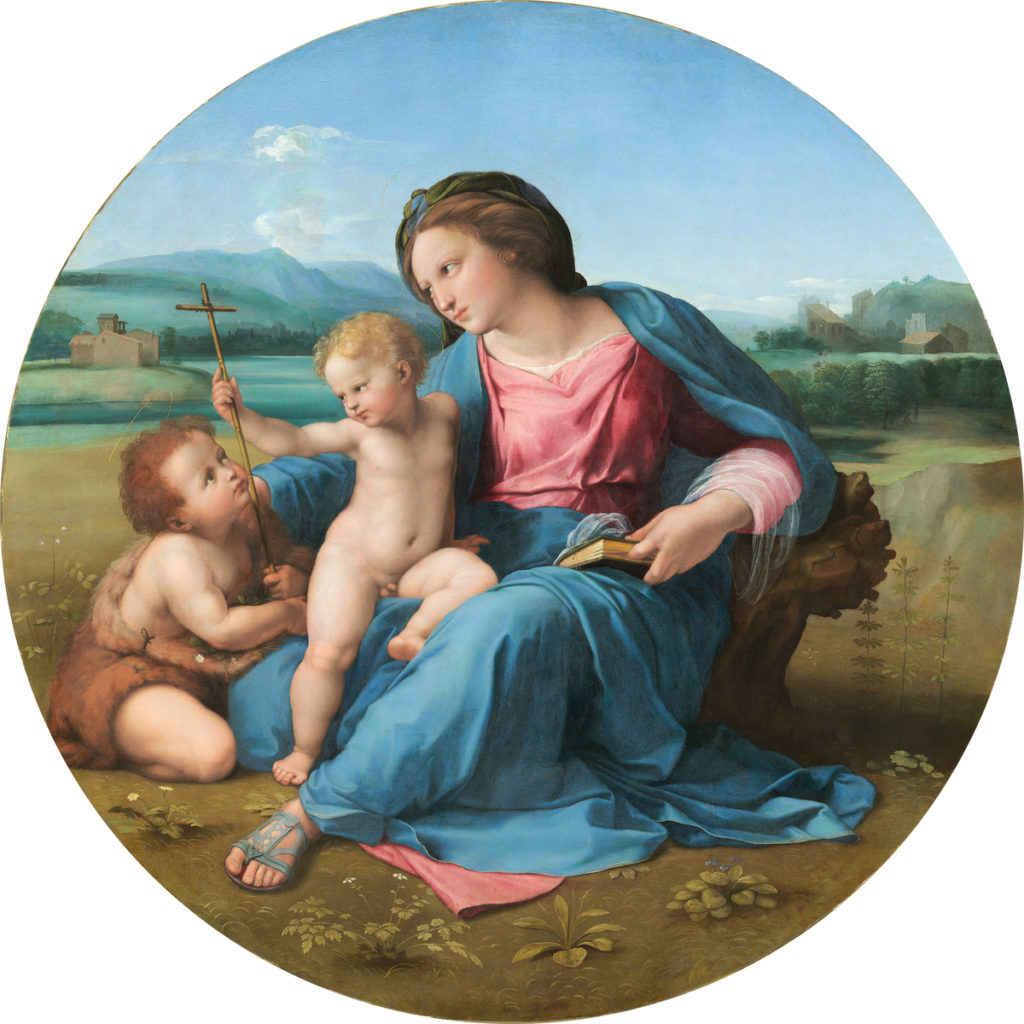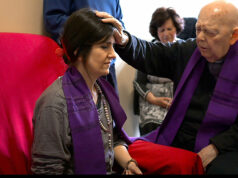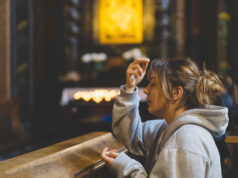
When Raffaello di Giovanni Santi (or Sanzio), known to his friends and the world as Raphael, completed his masterpiece tondo titled “The Alba Madonna” in 1510 he was at the ripe young age of 27.
Ten years later patrons, associates and friends would be shocked by his passing after he struggled with an acute illness.
As the art world marks the 500th anniversary of his death this year, a closer look at Raphael’s remarkable artistic achievements confirm his undisputed status as one of three great masters of the Italian High Renaissance, along with Michelangelo and Leonardo da Vinci.
Vasari, renowned Renaissance biographer, recounts that Raphael was born in 1483. His distinctive High Renaissance style unfolded in an artistic career that spanned three phases. His early years were lived out in Umbria followed by four brief, yet formative, years in Florence.
Beginning in 1508, Raphael made his home in Rome, creating frescoes for the papal chambers, designing tapestries for the Sistine Chapel and painting portraits.
When he died at 37, the pope ordered, at Raphael’s request, that the Renaissance genius, who had also served as keeper of Roman antiquities, be buried in the Pantheon.
As a young boy Raphael gained invaluable experience managing his father’s workshop. Orphaned at a young age he is said to have apprenticed to the Umbrian master painter, Pietro Perugino. Early commissions included the Baronci Altarpiece, the Mond Crucifixion and the Oddi Altarpiece in Perugia.
Raphael’s years in Florence impacted his emerging style. There he developed masterful skills of drawing and painting guided by Leonardo da Vinci’s groundbreaking techniques in oil painting and atmospheric perspective created through “sfumato.”
In imitation of Leonardo, Raphael’s drawings and paintings took on a unique Roman style marked by tranquil pyramidal compositions, the interplay of glances between his figures and the visual grandeur of Neoplatonic ideals of the beauty of the human form.

oil on panel transferred to canvas. He depicted three robust yet ethereal, otherworldly figures of the Madonna, the child Jesus and the infant John the Baptist in a low pyramid composition. (CNS photo/National Gallery of Art)
Two years after moving to Rome, he completed “The Alba Madonna,” typically on display at the National Gallery of Art in Washington.
The “tondo” or round canvas format, popular in Florentine art, evokes the eternal perfection of heaven. In that heavenly space, Raphael painted three robust yet ethereal, otherworldly figures of the Madonna, the child Jesus and the infant John the Baptist in a low pyramid composition.
Few paintings in the West capture the ideal physical and spiritual beauty of the mother of God while inviting the viewer to meditate on the central mystery in her divine son Jesus’ earthly life, his death on the cross.
Raphael paints the young Mary as a “Madonna of Humility,” seated low to the ground on a modest chair in an open meadow. The idealized classical landscape is a sharp contrast to the elegant golden thrones of Byzantine Madonnas or luxurious furniture painstakingly recreated in Renaissance and Baroque paintings.
Raphael captures a vision of ideal beauty in Mary’s porcelain-toned youthful face. Her elegantly draped robes are painted in a pleasant palette of pale rose and vivid blue against the green landscape. And Mary’s turbaned head, ornate sandals and flowing robes evoke the visual language of classical Greek and Roman art, now bathed in Christian meaning.
In her left hand, Mary holds her place in a book she clutches close to her heart. Perhaps it is the sacred text of God’s word that never leaves her side, evoking the words of Luke’s Gospel that “Mary kept all these things, reflecting on them in her heart” (Lk 2:19).
Through her exemplary life, Mary teaches the church how to hear God’s word with attentive reverence and to respond in faith and trust in God’s word.
Close to Mary stands the Christ Child and the infant John the Baptist, dressed in camel skin to indicate his future ascetic mission of preparing the way of the Lord. Their voluminous bodies, rendered in realistic flesh tones, represent the highest ideals of the painted human form that Raphael had perfected.
One can imagine the two infants interacting playfully as they grew up together in the same extended family.
Yet Raphael’s rustic setting is not a sentimental idealism. Rather it serves a more profound spiritual purpose. For Raphael, a master “visual catechist,” leads his viewers to follow the gaze, posture and spiritual insight of the three figures that dominate the scene.
Jesus, Mary and John the Baptist are spiritually united in a single gaze as they meditate together on the raised cross held gently aloft by Jesus in his right hand. Raphael invites us to join in their hopeful meditation as Jesus, Mary and John the Baptist reflect on Jesus’ future passion and death on the cross, the means by which the world will be reconciled to friendship with God.
Sullivan, educator and author, contributes articles to Catholic News Service and is the author of “The Beauty of Faith.”






